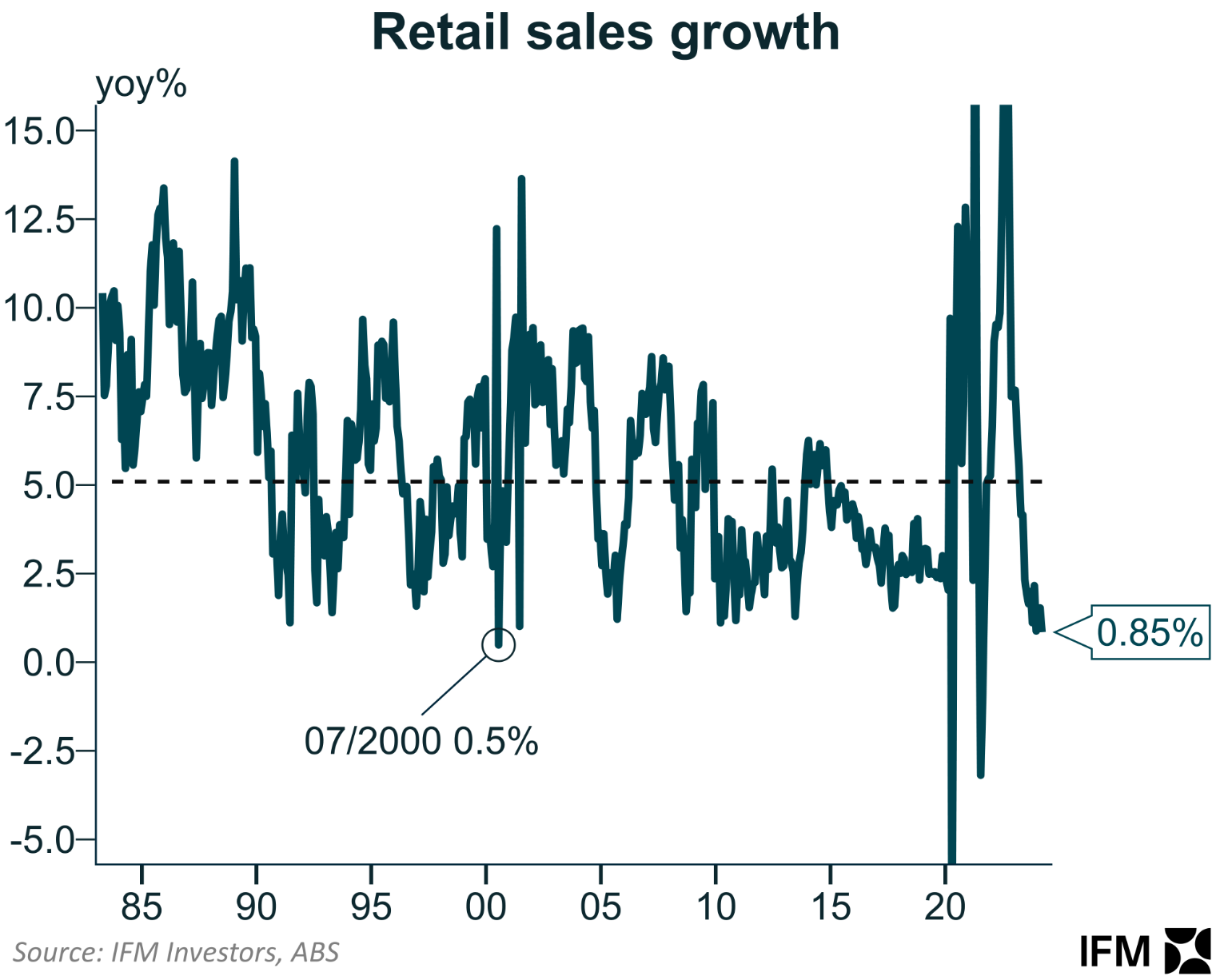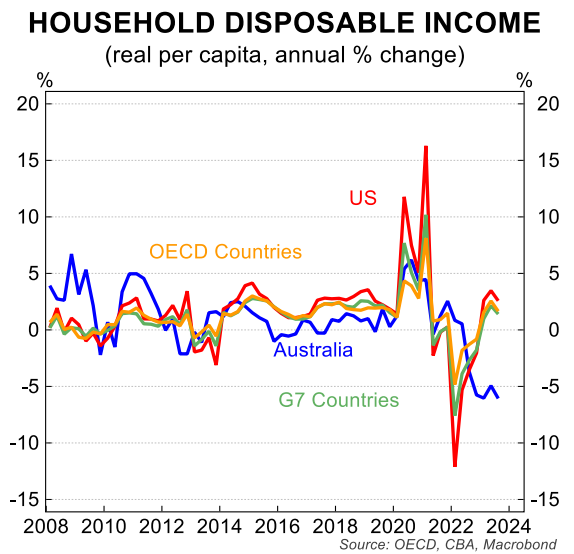In an interview with Sky News’ Danica De Giorgio, I explain why the latest collapse in retail sales means that the Reserve Bank of Australia (RBA) will be highly reluctant to lift interest rates further.
A week ago, all the talk was about the higher-than-expected inflation figure, which could potentially lead to another rate hike from the RBA.
I think this week’s retail sales have actually put a dampener on that.
Retail sales unexpectedly fell by 0.4% in March and they’re up only 0.8% year-on-year.
Now you might be listening to that thinking “that’s still growth”. But they were actually the weakest annual retail sales since 2000 outside the pandemic – that’s almost 25 years.

Once you subtract population growth of about 2.5% and CPI inflation of 3.6%, it means that households effectively cut back on their retail spending by about 5% in the year to March.

That is a massive cut-back and this decline in expenditure makes sense when you consider the fact that Australian households experienced the biggest decline in household disposable income in the world last year.

They suffered a 6% decline in real household disposable income and what this tells you is that household consumption is incredibly weak.
Household consumption drives about 60% of the economy’s growth and it should be a flashing red light signal to the Reserve Bank that it doesn’t need to hike rates again because households are already cutting back hard on expenditure and the economy is in trouble.

